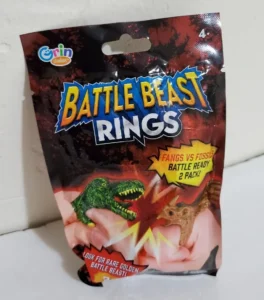Is Dinosaur King an Anime
When one considers the global phenomenon of 'Pokémon,' it's clear that the line between anime and western cartoons can sometimes blur, posing a similar question for 'Dinosaur King.'
Originating in Japan and featuring a distinctive style that aligns with traditional anime, 'Dinosaur King' has sparked debates over its classification.
As we explore its roots, animation techniques, and cultural impact, one must consider various perspectives to understand whether it truly fits within the anime genre.
This examination not only sheds light on 'Dinosaur King' but also invites broader questions about what constitutes anime in an increasingly globalized media landscape.
Key Takeaways
- Dinosaur King is considered an anime, originating from Japan and created by a Japanese team.
- It combines traditional 2D animation with CG effects, typical of anime style.
- The series meets key anime criteria with its vibrant artwork and exploration of complex themes.
- Its international appeal and hybrid animation approach challenge traditional perceptions of anime classification.
Defining Anime
What exactly constitutes an anime, and how does it distinguish itself from other forms of animation?
Fundamentally, anime is a style of animation that originated in Japan, characterized by its vibrant artwork, fantastical themes, and vibrant characters. Unlike Western animation, which often targets a younger audience, anime spans a wide range of genres, appealing to both children and adults. It's the cultural and stylistic nuances that set anime apart.
The storytelling is typically more complex and layered, delving into themes of philosophy, morality, and the human condition. The visual style is also distinct, with exaggerated facial expressions and meticulously detailed backgrounds that immerse viewers.
Therefore, determining if 'Dinosaur King' fits within this framework requires an understanding of these defining elements.
Origins of Dinosaur King
Dinosaur King, often celebrated for its captivating blend of adventure and education, emerged as a Japanese anime and trading card game in 2007, reflecting a seamless integration of traditional animation techniques and modern storytelling. Its origins trace back to the imaginative minds at Sega and Sunrise, aiming to capitalize on the perennial fascination with dinosaurs among children.
This strategic collaboration sought to blend educational content with the engaging world of anime, targeting a demographic eager for both entertainment and learning. The show's premise, centered around children battling with dinosaurs, leveraged the universal appeal of these prehistoric creatures, while the trading card game introduced an interactive element that extended the experience beyond the screen.
This innovative approach underscored a critical understanding of its audience's desires, setting a precedent for future multimedia franchises.
Animation and Style Analysis
Delving into the animation and style of Dinosaur King, it's evident that the series marries traditional 2D animation with CG effects, showcasing a creative blend that captures the dynamism of its dinosaur battles and characters' adventures. This hybrid approach allows for fluid movement and detailed expressions in characters, while the CG brings the prehistoric creatures to life with a level of detail and realism that pure 2D animation might struggle to achieve.
However, this fusion isn't without its drawbacks. At times, the transition between 2D and CG can be jarring, disrupting the viewer's immersion. Despite this, the overall aesthetic of Dinosaur King stands as a testament to the possibilities and challenges of integrating different animation technologies to tell a compelling story.
Cultural Impact and Reception
Since its debut, Dinosaur King has made a significant impact on audiences worldwide, captivating children and nostalgic adults alike with its unique blend of history and fantasy. The series' ability to weave together educational content with high-stakes adventure has been a key factor in its broad appeal.
Critics have noted the show's ingeniously simple premise—dinosaurs battling under the control of modern-day children—as a stroke of genius that taps into the universal childhood fantasy of befriending prehistoric creatures. Its reception, however, hasn't been without critique. Some argue that the portrayal of historical figures and dinosaurs occasionally borders on the simplistic, risking a dilution of educational value.
Despite this, Dinosaur King's cultural footprint is undeniable, spanning various media and inspiring a range of merchandise that underscores its lasting popularity.
Verdict: Anime or Not?
Frequently, the debate over whether Dinosaur King qualifies as an anime illuminates broader conversations about the definitions and boundaries of this animated genre. Originating in Japan and crafted by a Japanese production team, Dinosaur King ticks essential boxes that many purists use to classify anime. However, its international appeal and the manner in which it was marketed outside Japan have led some to question its authenticity as 'true anime.'
This scrutiny underlines a critical misunderstanding of anime's diversity and global influence. Anime isn't a monolith but a dynamic, evolving art form that transcends geographical and cultural boundaries. Therefore, considering its Japanese origin, stylistic elements, and narrative structure, Dinosaur King should indeed be classified as anime, challenging purists to expand their perceptions of what this genre can encompass.
Conclusion
In an ironic twist, despite its unmistakably Japanese origins and traditional animation style, the debate on whether Dinosaur King qualifies as anime has raged on. Analyzing its cultural impact and stylistic elements reveals a series that's quintessentially anime, yet some purists balk at the label.
It's almost comedic how a show, deeply embedded in anime's DNA, finds itself on the outskirts of the definition. Ultimately, Dinosaur King stands as a testament to anime's fluid boundaries, challenging purists and embracing enthusiasts alike.



